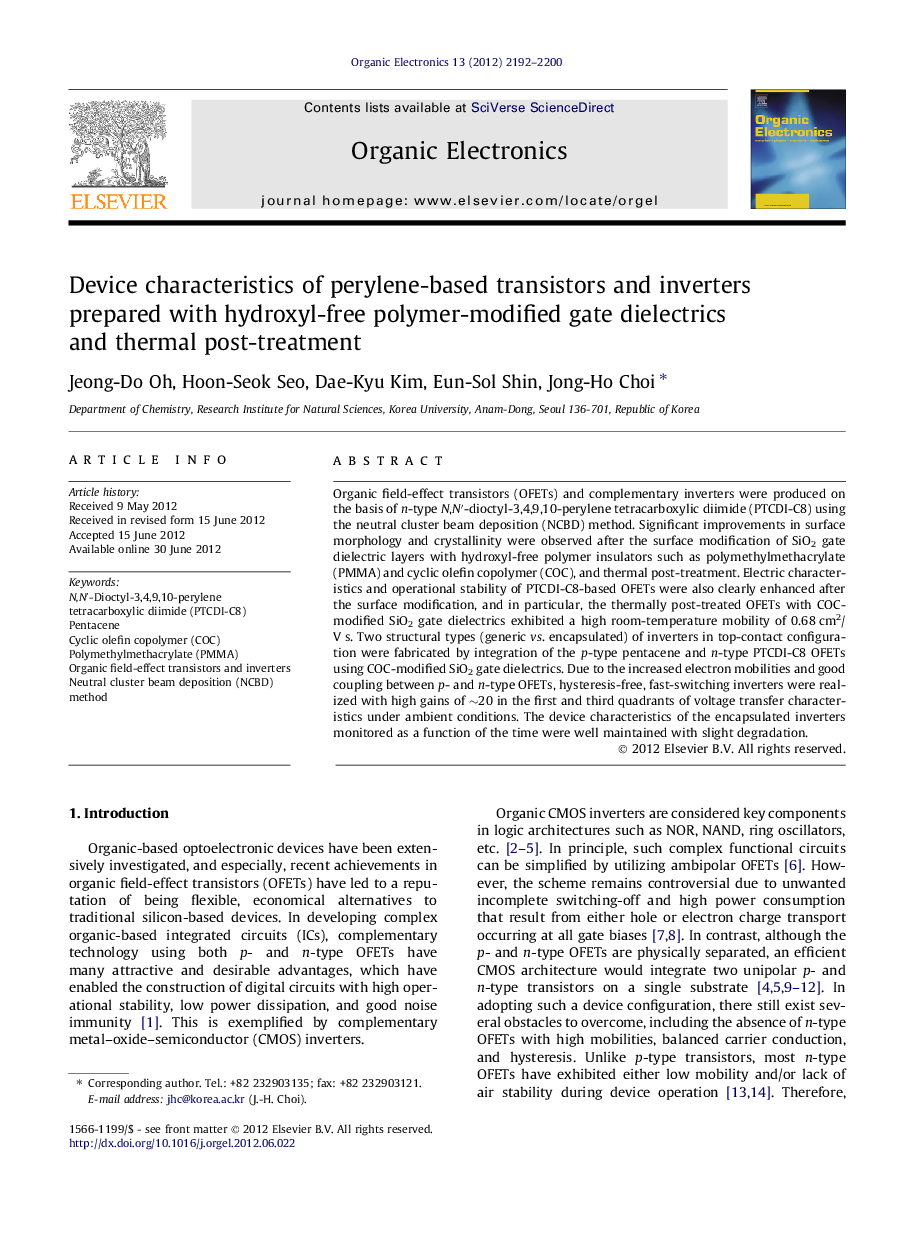| Article ID | Journal | Published Year | Pages | File Type |
|---|---|---|---|---|
| 1267396 | Organic Electronics | 2012 | 9 Pages |
Organic field-effect transistors (OFETs) and complementary inverters were produced on the basis of n-type N,N′-dioctyl-3,4,9,10-perylene tetracarboxylic diimide (PTCDI-C8) using the neutral cluster beam deposition (NCBD) method. Significant improvements in surface morphology and crystallinity were observed after the surface modification of SiO2 gate dielectric layers with hydroxyl-free polymer insulators such as polymethylmethacrylate (PMMA) and cyclic olefin copolymer (COC), and thermal post-treatment. Electric characteristics and operational stability of PTCDI-C8-based OFETs were also clearly enhanced after the surface modification, and in particular, the thermally post-treated OFETs with COC-modified SiO2 gate dielectrics exhibited a high room-temperature mobility of 0.68 cm2/V s. Two structural types (generic vs. encapsulated) of inverters in top-contact configuration were fabricated by integration of the p-type pentacene and n-type PTCDI-C8 OFETs using COC-modified SiO2 gate dielectrics. Due to the increased electron mobilities and good coupling between p- and n-type OFETs, hysteresis-free, fast-switching inverters were realized with high gains of ∼20 in the first and third quadrants of voltage transfer characteristics under ambient conditions. The device characteristics of the encapsulated inverters monitored as a function of the time were well maintained with slight degradation.
Graphical abstractFigure optionsDownload full-size imageDownload as PowerPoint slideHighlights► Fabrication of organic-based transistors and inverters using neutral cluster beams. ► Performance enhancement after surface modification and thermal post-treatment. ► Hysteresis-free, fast-switching inverters with high gains under ambient conditions.
